It’s an ill wind that blows nobody any good. The demise of the ill-fated guided bus scheme in Leeds has released £173 million worth of Department for Transport money for new projects in the city region. But it needs to be spent swiftly - by the end of this Parliament - or it could disappear.
Suddenly, after consulting residents and businesses, Leeds Council has come up with a scheme. It proposes building three new rail stations in key growth areas on the city’s edges. If not the stuff of dreams - increasingly any Light Rail Transit system seems to be a mirage dipping over the horizon - there appears to be a solid practicality about the plan.
The headline-grabber is a direct link to Leeds Bradford Airport - a parkway on the Leeds-Harrogate line that would also serve commuters. Out on a limb to the northwest of Leeds and ill-served by roads, the airport has woeful public transport links - for example, just one hourly bus from nearby Harrogate.
On the city’s southwest edge stand White Rose retail park. Sitting near the Huddersfield line, it also has the sense of being disconnected. But it is set to grow, with more shops and a business park on the way.
Meanwhile the eastern edge of Leeds is filling up with new housing and businesses. There has long been a pressing need for a new station, on the Selby/York line, to supplement Cross Gates and Garforth. The proposed site, Thorpe Park, has been earmarked for some time.
This is, in fact, a joint enterprise involving Leeds City Council and regional body the West Yorkshire Combined Authority (WYCA). Yet students of Leeds’ unhappy history of planning public transport may be surprised to see these three projects now on the agenda. It’s not that there isn’t a plausible case for each, but rather that two of them - White Rose and airport parkway - were given short shrift by a WYCA-commissioned study two years ago.
In fact, every option for an extra station on the Leeds-Harrogate line was dismissed by the consultant, Atkins. There was no consideration of any airport link despite Judith Blake, leader of Leeds City Council, recently claiming that this “has long been an ambition for the city”. And White Rose was considered unsuitable “due to the changes which would be needed to the track and signalling equipment”.
The Atkins report added: “The site is located on a curve with a high line speed and a high degree of cant (slant). Constructing a station at this location would be costly.
“It’s also relatively close to Leeds city centre, which means that the impact of stopping services would be detrimental to journey times. Line capacity is already constrained. Morley and Cottingley stations are both less than 1.5km either side of White Rose.”
So what’s changed - other than Leeds now needing not only to spend money in a hurry, but also to be seen acting decisively?
“There’s a lot of development taking place at White Rose,” says city council head of transport and planning Andrew Hall.
“We understand the constraints, but we’ve identified those. It’s a complex piece of railway line. There’ll be issues to work through, such as the optimum site for a station.”
The case for an airport link, amid decades of inactivity, has long been overwhelming, although quite where this will be remains uncertain.
“Technical difficulties and the topography make a fixed rail-based link extremely challenging,” Hall warns. “There will need to be more studies.” No site has yet been determined - a new station could be 1km to 1.5km from the airport terminal, he adds.
According to Hall, a parkway station serving East Leeds has also been a long-held ambition of Leeds Council and WYCA. Thorpe Park, lying east of an existing station at Cross Gates, emerged as a front-runner after Atkins had considered eight sites along the Selby/York Line.
Its “more rural location” means potential construction issues “appear to be minimal. Land would be available. It’s well-located for park and ride, being next to major trunk routes, and linked to developer proposals for substantial new development.”
Electrification plans “present an opportunity to alter service patterns and frequencies on this capacity-constrained route”, Atkins concludes. But although the lie of the land is less challenging than for any airport site, there are complications.
“It’s a busy line,” says Hall. “And it will need to connect with the proposed link road we’re building in East Leeds between the A63 and A64.”
The three projects were announced by Leeds City Council shortly before Christmas - to considerable fanfare. Also in the pipeline are other improvements: better access at Cross Gates, Morley and Horsforth stations; and car park expansion at New Pudsey.
A city wearied by disappointment and fiasco when it comes to securing a light rapid transit system will be keen to know what happens next. As yet, there’s no clear timeline.
“The plan has been sent to the Department for Transport, and we’d expect a response within the next two months,” says Hall.
“Then (if approved), we’d look to start a formal development proposal involving Leeds City Council, WYCA and various parties in the rail industry. We anticipate making substantial progress towards getting the stations, and construction, by the end of the decade.”
So could they be open by 2020-21?
“That’s difficult to say.”
How much provisional spadework has been done with Network Rail? Not a great deal, it would appear. According to Hall, NR “is aware of the three options”, although around Thorpe Park “there have been conversations for some time”.
Nor are there signs either of a schedule or any early notion of cost.
“The broad brush assumption in terms of putting in a station is £10m each,” says Hall. “But there would be other costs such as changes to the signalling. We don’t have detailed figures.”
According to Richard Lewis, the member in charge of transport policy on Leeds City Council, “most things will end up costing more, some less”.
He tells RAIL: “Only a complete cretin would say ‘here’s the report we’ve produced at the end of 2016, and we know that by 2021 all of those will have moved at the same pace and be delivered’.
“I never like to be as absolute as that - everything we’re talking about will always be provisional at this stage. But everything we’ve put forward in the document we can do.”
Lewis says that of all the overloaded commuter routes in Leeds, the A660 running northwest through Headingley is “the most problematic… completely dysfunctional as a highway… a basket case of a road”. The thinking is that an airport parkway might relieve some of the strain, as well as benefiting air travellers.
What all this means for reviving a light rail transit system is anyone’s guess. The council’s press release conveyed a sense of this being booted into the far distance.
“Such a scheme would need a lot more investment and take a lot longer to deliver,” it said. “There’s a clear priority need to deliver changes.”
Lewis is nothing if not blunt. “There’s no point in speaking about mass transit in the next ten years - it’s undoable… though I’m not saying we shouldn’t carry out any work on it.”
Hall adds that while the potential for rail stations “offers real opportunities, we haven’t dismissed LRT in terms of what we’ve said to the DfT. We still have a commitment to look at it”.
But are variants on north to south lines across Leeds the best solution? Maybe not, according to Mark Goldstone, head of business at West and North Yorkshire Chamber of Commerce.
“I think there’s a case to be made for an east to west route, from Bradford to Castleford,” he tells RAIL. “We’ll do our best to keep LRT on the agenda, though we need to get some improvements out in the short term.”
The Chamber has long campaigned for new rail stations around Leeds. “When you talk about getting people out of their cars, it is probably easier that trying to get them on buses,” says Goldstone.
He believes that option could be enhanced if the Selby/York line became four-tracked. It would ease a bottleneck and allow for the possibility of more through trains. And it’s something the Chamber has raised with Network Rail. “We meet regularly and have had fruitful conversations over the last 18 months,” he says.

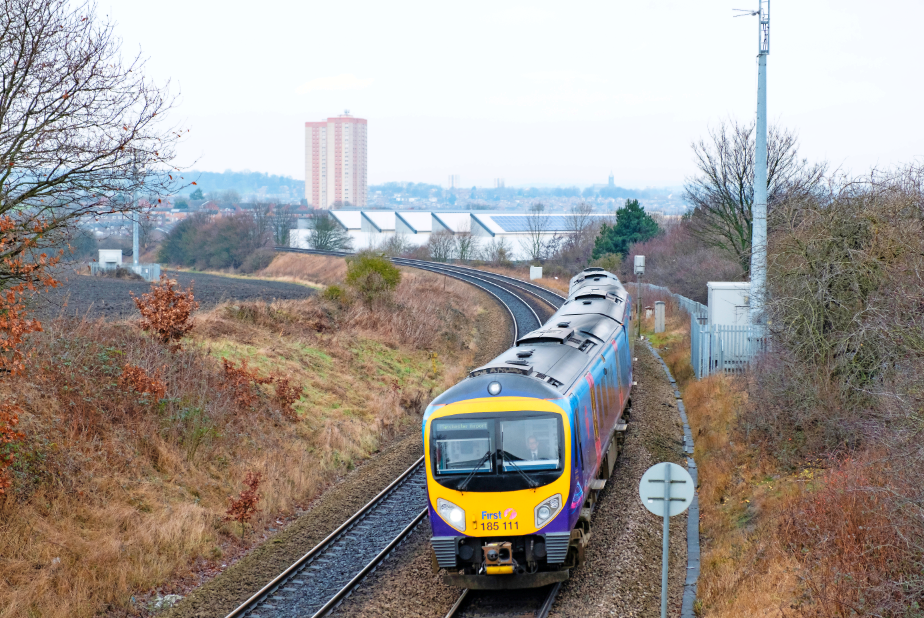
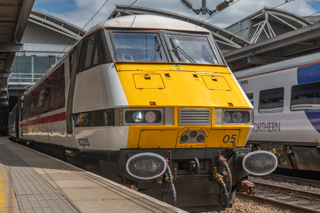
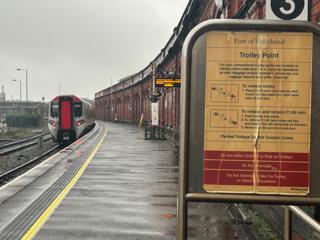
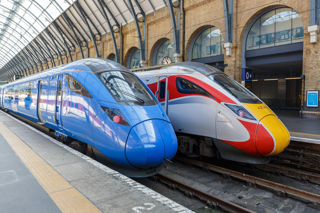







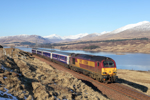



Dave Holladay - 19/05/2017 11:12
The solution is a tram-train - used in the right way (as in Karlsruhe & Kassel) a 'tram' loop around Leeds City Centre via Headrow - Bus Station - City Station would remove the need for many bus routes to clog the city as they ALL make a circuit to collect passengers - it can cost 10-15 minutes on a peak hour 36 (Leeds-Harrogate) and adds to the peak vehicle requirement on this and many other routes, as well as clogging up bus stops & streets. The central loop would, as with Metrolink offer frequent and free onward rail connections (indeed all city centre circulation for people, reducing the need for so many vehicles churning around in the centre). A connection to the West has options - Wellington Street viaduct on to Wellington Street connecting to the routes now all converging on Wortley Junction and posing the major capacity constraint on City Station so that tram trains adding to the service frequencies on the Harrogate and Bradford Interchange routes would be taken to City Station via the 'on street' route or the Airport link, leaving the Harrogate Line at/North of Horsforth, could run via the central reserve of Kirkstall Road as an alternative to restoring a 4-track railway from Headingley to Wortley. As with Metrolink the city core provides the option for the Eastern aspirations as a tram-train can provide the 'metro service to Crossgates, Garforth and beyond by restoring the 4 track railway, running past Neville Hill on by some re-arrangement of use/tracks on existing railway land and using a combination of the under-used/4th track in the deep cutting to get through via the former station and aggregates siding to a point which requires around 0.5Km of reserved track/on street running to reach the city centre loop (with a future option to branch South to Hunslet/Middleton from Neville Hill). The 2-track constraint on the Eastern approach to City Station would thus gain from the local 'Metro' traffic running via the Bus Station and Headrow to City Square - destinations which many of those travelling on the local services want to get to - reducing their walking/additional bus trip to reach a daily work/college destination. Future prospects would then be to grow using the bivalency of tram train - extending from the Airport to Yeadon and beyond. Running to Harrogate and then using the potential of former rail formations to reach North for a Ripon P&R catchment, or loop to better serve the wider area. A tram -train could link the relatively short connection between Headingley to Kirkstall Forge retail park and the major housing development which currently has the paucity of 1 train per hour on the Shipley and 1 per hour on the llkley line - Again the 4 track formation provides the option to run a tram train Metro service delivering appropriate frequencies of service back to Shipley and potentially round via Bradford to eventually connect the 2 stations with rails. This connection could easily cut an hour from the Harrogate-Bradford journey by public transport.